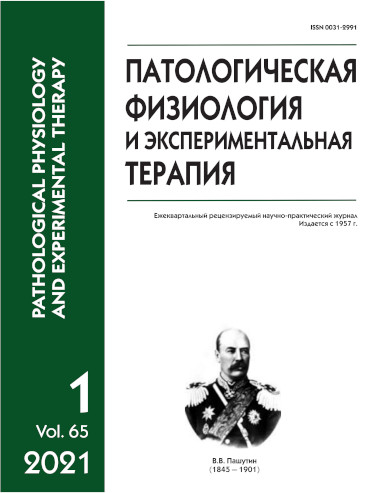Uromodulin: Relationship of protein oligomeric forms and functions
Abstract
Introduction. Uromodulin is the major protein, which is normally present in urine and plays multiple physiological roles. Evaluation of the uromodulin contribution to stabilization of urinary colloids in normal and various pathological conditions requires a comprehensive study of uromodulin oligomeric forms occurring in urine, their structure and functions. The aim of this work was studying structural features of uromodulin oligomeric forms in the urine of healthy volunteers and patients with confirmed urolithiasis and identifying a relationship between the protein structure and role in stabilization of urinary colloids. Methods. Dynamic light scattering (DLS), nanoparticle tracking analysis (NTA), and measurement of zeta potential were used to study biophysical properties of uromodulin (UM) isoforms. UM is present in native urine as oligomeric forms, including two major ones: i) UM (7), a 7MDa globular molecule characterized by a hydrodynamic radius Rh = 90−100 nm and a negative surface charge of 25−30 mV and ii) UM (28), a rod-like 28MDa molecule with a hydrodynamic radius of Rh=200−300 nm and a significantly lower surface charge of 0 − -7 mV. Results. Normally, UM (7) is a dominant form in urine whereas the UM (28) contribution is either non-existent or minor. In urolithiasis, the proportion of UM (7) decreases drastically, and the contribution of UM (28) becomes primary. Model experiments showed differences between these transitions in the urine of healthy individuals and patients with urolithiasis depending on pH values and concentrations of monovalent cations, including sodium, potassium, and ammonium. Conclusion. The study results considerably expanded the concept of the sanogenetic system of colloidal homeostasis in urine formation and the pathogenesis of crystallogenesis. Approximating the proposed concept of pathological crystallogenesis in clinical practice expands the informative value of preventive diagnosis of urolithiasis.






